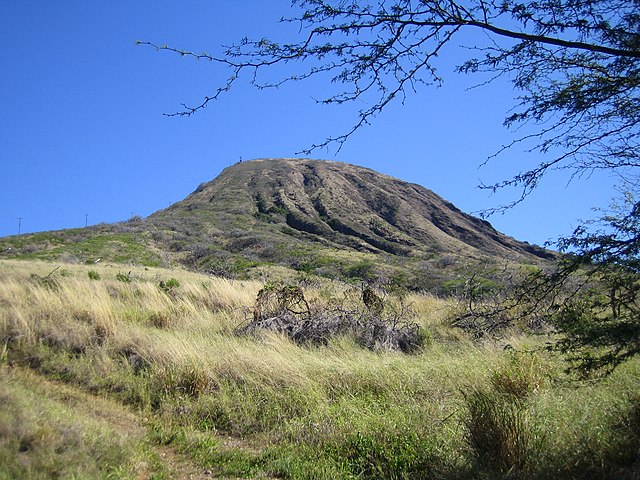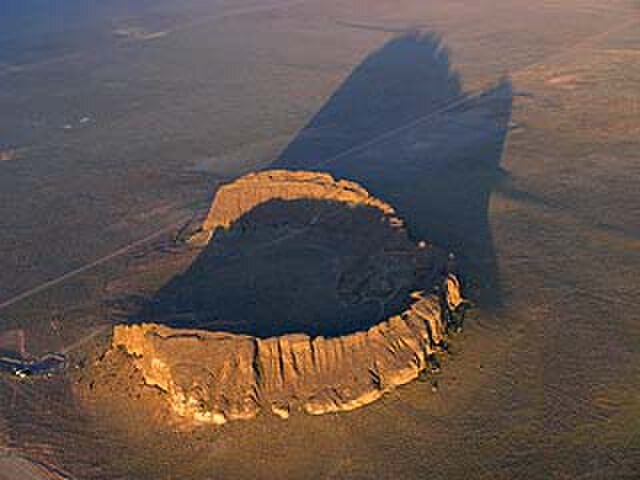Phreatomagmatic eruptions are volcanic eruptions resulting from interaction between magma and water. They differ from exclusively magmatic eruptions and phreatic eruptions. Unlike phreatic eruptions, the products of phreatomagmatic eruptions contain juvenile (magmatic) clasts. It is common for a large explosive eruption to have magmatic and phreatomagmatic components.
Ashfall deposit of phreatomagmatic origin, overlying lapilli fall deposit of magmatic origin
Crest of old tuff ring, including part of the maar crater of a monogenetic volcano, Tenerife, Canary Islands. The maar crater has been used for agriculture.
Koko Crater is an old extinct tuff cone in the Hawaiian Island of Oahu.
Fort Rock, an eroded tuff ring in Oregon, US.
A volcano is a rupture in the crust of a planetary-mass object, such as Earth, that allows hot lava, volcanic ash, and gases to escape from a magma chamber below the surface.
Sabancaya volcano erupting, Peru in 2017
Lakagigar fissure vent in Iceland, the source of the major world climate alteration of 1783–84, has a chain of volcanic cones along its length.
Skjaldbreiður, a shield volcano whose name means "broad shield"
Izalco volcano, the youngest volcano in El Salvador. Izalco erupted almost continuously from 1770 (when it formed) to 1958, earning it the nickname of "Lighthouse of the Pacific".








